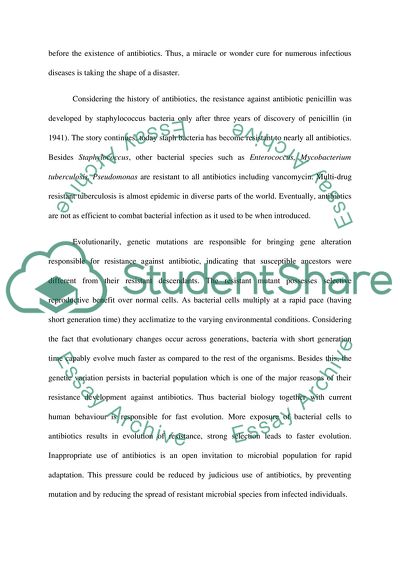Contemporary culture Essay Example | Topics and Well Written Essays - 500 words. https://studentshare.org/medical-science/1841736-bacterial-biology-and-resistance-against-antibiotics
Contemporary Culture Essay Example | Topics and Well Written Essays - 500 Words. https://studentshare.org/medical-science/1841736-bacterial-biology-and-resistance-against-antibiotics.


